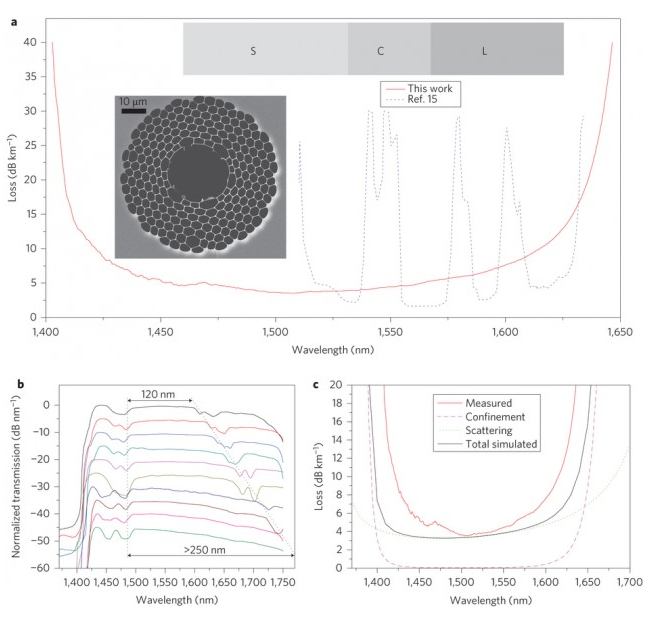Researchers at the University of Southampton in England have produced optical fibers that can transfer data at 99.7% of the universe’s speed limit: The speed of light. The researchers have used these new optical fibers to transfer data at 73.7 terabits per second — roughly 10 terabytes per second, and some 1,000 times faster than today’s state-of-the-art 40-gigabit fiber optic links, and at much lower latency.
The speed of light in a vacuum is 299,792,458 meters per second, or 186,282 miles per second. In any other medium, though, it’s generally a lot slower. In normal optical fibers (silica glass), light travels a full 31% slower. Light actually travels faster through air than glass — which leads us neatly onto the creation of Francesco Poletti and the other members of his University of Southampton team: A hollow optical fiber that is mostly made of air.
It might seem counterintuitive, transmitting light down fibers made primarily of air, but look around you: If light didn’t travel well through air, then you’d a hard time seeing. It isn’t like researchers haven’t tried making hollow optical fibers before, of course, but you run into trouble when trying to bend around corners. In normal optical fiber, the glass or plastic material has a refractive index, which causes light to bounce around inside the fiber, allowing it to travel long distances, or Remove the glass/plastic and the light just hits the outer casing, causing the signal to fizzle almost immediately. The glass-air interface inside each fiber also causes issues, causing interference and limiting the total optical bandwidth of the link.
Research paper: doi:10.1038/nphoton.2013.45 – “Towards high-capacity fibre-optic communications at the speed of light in vacuum”
Read Full Story at: ExtremeTech













